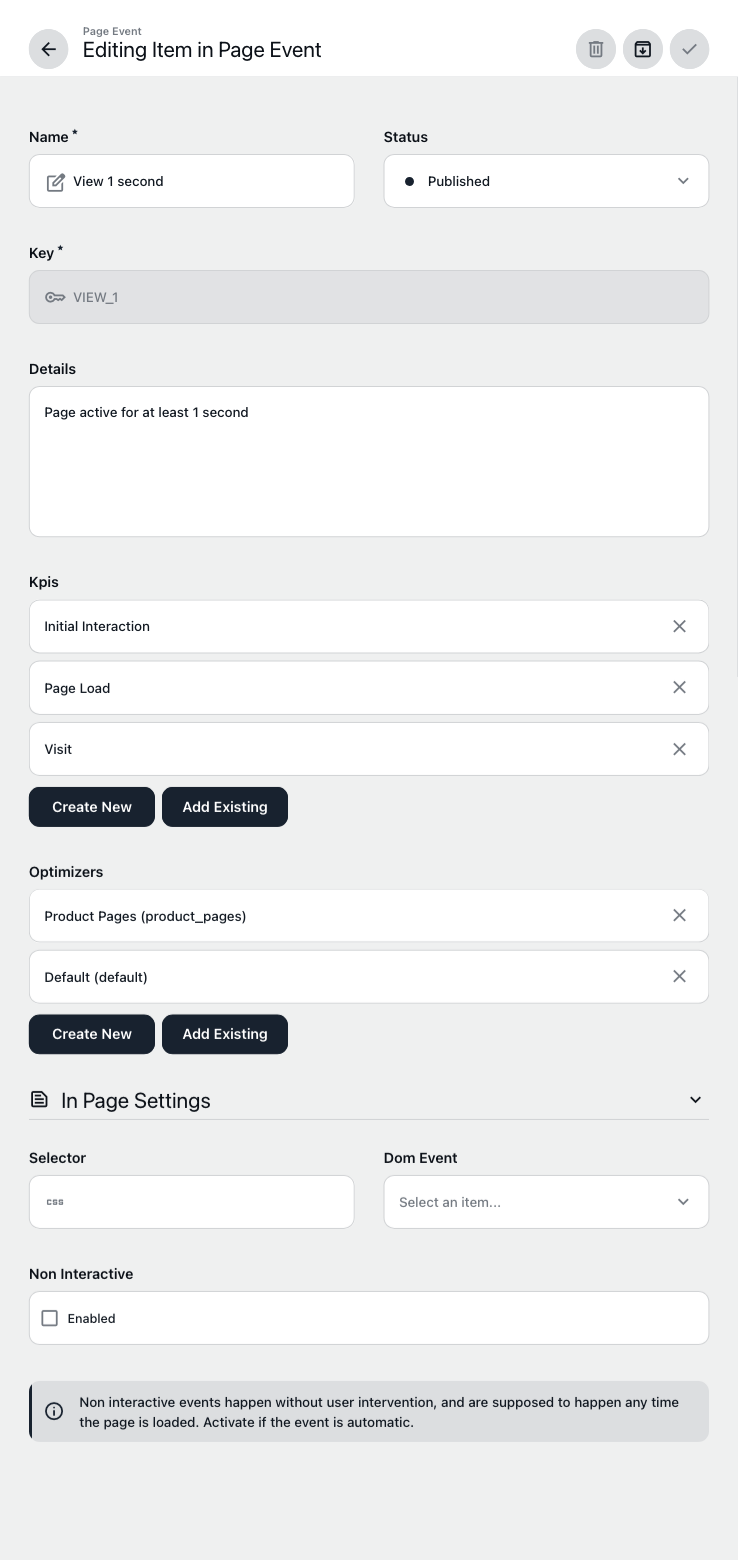Appearance
Page Event Overview

Page events are the building blocks for tracking real user actions and engagement on your site. They determine when KPIs trigger and how conversions are measured—giving you a clear, actionable picture of what matters most.
Page Event Fields
Name:
The display label for this event.Status:
Indicates if the event is active and being tracked.Key:
The public identifier for this event.
Tip: If you need to fire this event from your site’s JavaScript, callpnevt("KEY_ID")whereKEY_IDmatches this field.Selector & DOM Event:
- Selector: The CSS query selector for the target element (e.g.,
#submit-btnor.cta-link). - DOM Event: One or more supported JavaScript events (e.g.,
click,submit,change).
When the selected DOM event fires on the matching element, the page event is triggered.
Event Volume
Be cautious with selectors and event types. Attaching events to elements that fire too often (e.g.,
mousemove,scroll) or using overly broad selectors can generate thousands of events per page view and inflate billing. Stick to meaningful user actions, typicallyclick.- Selector: The CSS query selector for the target element (e.g.,
Non-Interactive:
If enabled, marks the event as automatic (does not indicate real user engagement)—similar to "non-interactive" in Google Analytics.
If not enabled, the event signals genuine user interaction.
Managing and Using Page Events
Dynamic Event Tracking:
In most cases, you can manage events dynamically via admin settings—no need to touch your site code. For advanced use, implement event firing in your site’s JS with the providedpnevt()method.Best Practices:
- Only track events that matter for engagement or conversion (e.g., button clicks, form submissions).
- Avoid broad or generic selectors.
- Use "non-interactive" sparingly—reserve for passive, system-generated events.
Need help configuring page events, custom selectors, or troubleshooting event volume?
Contact support here. — our team is ready to assist.